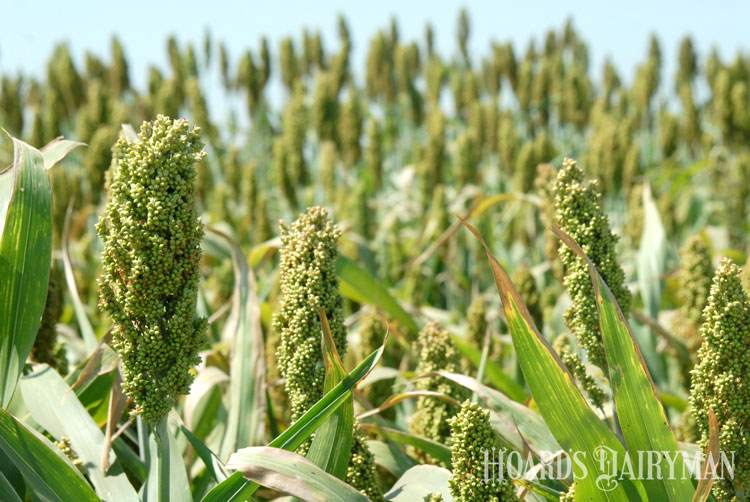
There is no denying corn is a vital crop on American farms. In many parts of the country, there is enough rain to grow the crop without supplemental irrigation. As more dairies have expanded into the low-rainfall Great Plains and the arid west, though, it is important to ensure an adequate, reliable source of water for crop and livestock production. Farmers are increasingly looking for ways to conserve the limited water in this part of the county. One of these strategies may be to take a closer look at sorghum.
Sorghum has a well-deserved reputation for drought tolerance and a higher water use efficiency compared with corn. Many farmers in these regions already have experience growing sorghum but largely use it to feed heifers or dry cows with lower nutritional requirements while continuing to grow corn silage for lactating cows.
To further understand sorghum in a dairy ration, Dairy Management Inc.’s environmental research team is partnering with the sorghum checkoff on a research project at Texas A&M University. Each checkoff is funding different components of the project to leverage their respective investments for mutual benefit.
In this study, milk production from dairy cattle fed sorghum silage supplemented with corn grain and soybean meal is being compared to the production of cows fed corn silage. Yes, some corn grain is still being used in the ration, but dry corn is more efficient to transport from other parts of the country compared with the heavier, higher water content of corn silage.
This study is specifically looking at a forage type of sorghum that does not produce a viable grain head. Some research has shown that by using this type of forage sorghum, it may be possible to extend the harvest window available to farmers while still maintaining nutritional quality. I don’t know many farmers who would complain about a little extra flexibility at harvest time.
In addition to the expertise of the Texas A&M team, the location of this project was strategic. It is located on the southern portion of the Ogallala aquifer, which covers about 80% of the Great Plains. The dairy industry in the panhandle region of Texas has expanded significantly but has seen an overall reduction in water levels because the aquifer cannot be replenished quickly enough to meet demand. It may be possible that more forage sorghum acreage could alleviate some of the water demand by reducing irrigation use.
With parts of the country continuing to face water challenges, we know farmers will need to keep finding ways to optimize water use. The dairy checkoff team is committed to helping farmers look for innovative ways to continue their tradition of sustainably caring for land and livestock while supporting the farm business’ bottom line.






